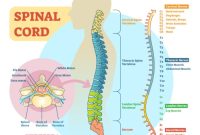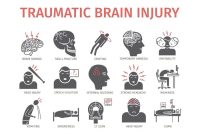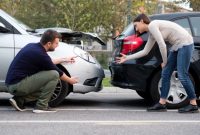Car accidents are a frightening and potentially life-threatening experience. The immediate aftermath of an accident can be chaotic and confusing, but taking fast and effective actions can make a significant difference in the outcome for those involved. This guide will provide you with a comprehensive overview of the steps to take in the event of a car accident, from securing the scene and assessing the situation to providing first aid and coordinating with emergency services.
The information presented here is based on established emergency response protocols and is intended to empower you to respond confidently and effectively in an emergency situation. By following these guidelines, you can help ensure the safety of yourself, others, and contribute to the best possible outcome for all involved.
Immediate Actions at the Accident Scene
Ensuring the safety of victims and bystanders is paramount after a car accident. Follow these crucial steps to effectively respond to the situation:
Securing the Accident Scene
Before approaching the accident, prioritize your safety by parking your vehicle in a safe location, turning on hazard lights, and wearing a high-visibility vest if available. Assess the scene for potential hazards like downed power lines, leaking fuel, or unstable vehicles.
Use cones, flares, or reflective triangles to warn oncoming traffic and prevent further accidents.
Checking for Injuries and Providing First Aid
Approach the accident cautiously, checking for injuries among victims and bystanders. If you have medical training, provide first aid immediately. For severe injuries, call for emergency medical services promptly. For minor injuries, apply pressure to stop bleeding, immobilize broken bones, and treat wounds with antiseptic.
Contacting Emergency Services
Call emergency services (e.g., 911) immediately to report the accident and request assistance. Provide clear information, including your location, the number of vehicles involved, any injuries, and any hazards at the scene.
Documenting the Scene
If possible, take photos of the accident scene, including damage to vehicles, injuries, and road conditions. Gather witness information and exchange insurance details with other drivers involved.
Assessing the Situation
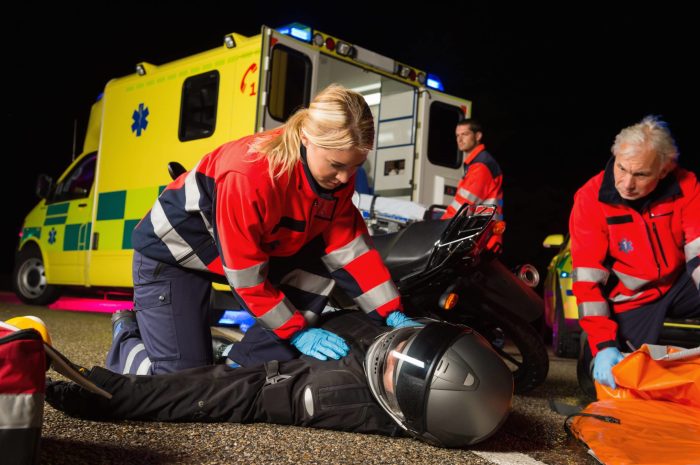
After ensuring your safety, assess the situation to determine the severity of the accident and the need for immediate medical attention.
Begin by checking for consciousness. Tap the person’s shoulder and shout, “Are you okay?” If they don’t respond, gently shake them and repeat the question.
Checking Vital Signs
- Breathing: Look for chest movements or listen for breathing sounds. If the person is not breathing, start CPR immediately.
- Pulse: Check for a pulse on the person’s neck or wrist. If there is no pulse, begin CPR.
- Pupils: Check the person’s pupils. If they are dilated and unresponsive, it could indicate a head injury.
Assessing Risk
Once you have assessed the person’s vital signs, look for any potential hazards or risks that could cause further injury or danger.
- Leaking fluids: Check for leaking fuel, oil, or other fluids that could be hazardous or flammable.
- Electrical hazards: Be aware of any downed power lines or damaged electrical equipment that could pose an electrocution risk.
- Traffic hazards: If the accident occurred on a road, be mindful of oncoming traffic and take steps to protect yourself and the injured person.
Triage and Stabilization
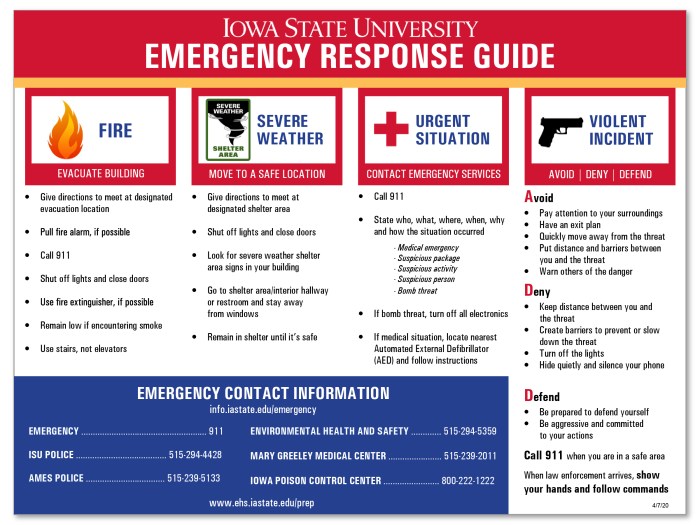
Triage is the process of prioritizing medical treatment for multiple casualties based on the severity of their injuries. In a car accident, it is crucial to establish a triage system to ensure that those with the most critical injuries receive immediate attention.explanatory
paragraphStabilization involves providing initial care to victims to prevent further deterioration of their condition. This includes immobilizing fractures, controlling bleeding, and monitoring vital signs. Comfort care is also important to reduce pain and anxiety.
- Organize a triage system to prioritize the treatment of victims based on their injuries.
- Stabilize victims, including immobilizing fractures and controlling bleeding.
- Monitor vital signs and provide comfort care.
Extrication and Transportation
Extricating victims from vehicles and transporting them safely to medical facilities are crucial aspects of emergency response to car accidents. This involves using specialized tools and techniques to free trapped individuals and ensuring their well-being during transport.
Extrication Methods
The choice of extrication method depends on the type of vehicle, the extent of damage, and the victim’s condition. Common methods include:
- Manual extrication: Using hand tools to cut through metal and pry open doors.
- Hydraulic extrication: Using hydraulic tools to spread, cut, or crush metal.
- Airbags: Inflating airbags to create space around the victim.
- Vehicle stabilization: Using jacks and blocks to stabilize the vehicle and prevent further movement.
Safe and Efficient Transportation
Once the victim is extricated, safe and efficient transportation to an appropriate medical facility is essential. This involves:
- Immobilization: Using splints, casts, or traction devices to prevent further injury.
- Monitoring: Continuously assessing the victim’s vital signs and providing oxygen or other medical interventions as needed.
- Coordination with EMS: Working closely with emergency medical services to ensure seamless transfer of care and appropriate transport to a hospital or trauma center.
Communication and Documentation
Clear and effective communication is paramount in emergency response to ensure timely and coordinated care for accident victims. All responders must convey information accurately and concisely, using standard terminology and avoiding jargon.Documentation plays a crucial role in ensuring accurate reporting and accountability.
It should include detailed observations of the accident scene, injuries sustained, treatment provided, and transportation arrangements.
Legal and Ethical Responsibilities
Emergency responders have a legal and ethical obligation to report accidents promptly and accurately to the relevant authorities. This includes providing information on the location, severity, and circumstances of the accident, as well as details of injuries and any fatalities.
Failure to report accidents can result in legal consequences and ethical breaches.
Final Summary
Responding to a car accident requires a combination of冷静, critical thinking, and compassion. By following the steps Artikeld in this guide, you can provide immediate assistance to those in need and help prevent further injury or harm. Remember, every action you take can make a difference, and your efforts can save lives.
FAQs
What should I do first after a car accident?
After a car accident, the most important thing to do is to ensure the safety of yourself and others. Pull over to the side of the road if possible, turn on your hazard lights, and check for any injuries. If you or anyone else is injured, call for emergency services immediately.
How do I check for injuries after a car accident?
To check for injuries, start by assessing your own condition. Check for any pain, bleeding, or other signs of injury. Once you have checked yourself, check the other passengers in your vehicle. Look for any signs of consciousness, breathing, and movement.
If someone is unconscious or not breathing, call for emergency services immediately.
What should I do if someone is trapped in a vehicle after a car accident?
If someone is trapped in a vehicle after a car accident, do not attempt to remove them yourself. Wait for emergency services to arrive and extricate the person safely. Attempting to remove someone who is trapped can cause further injury.
How do I communicate with emergency services after a car accident?
To communicate with emergency services after a car accident, call 911 or your local emergency number. Provide the dispatcher with your location, the number of vehicles involved, and any injuries that you are aware of. Stay on the line with the dispatcher until help arrives.

